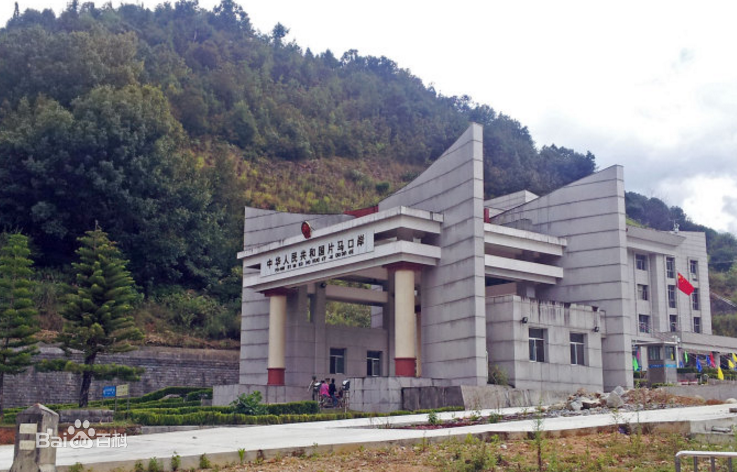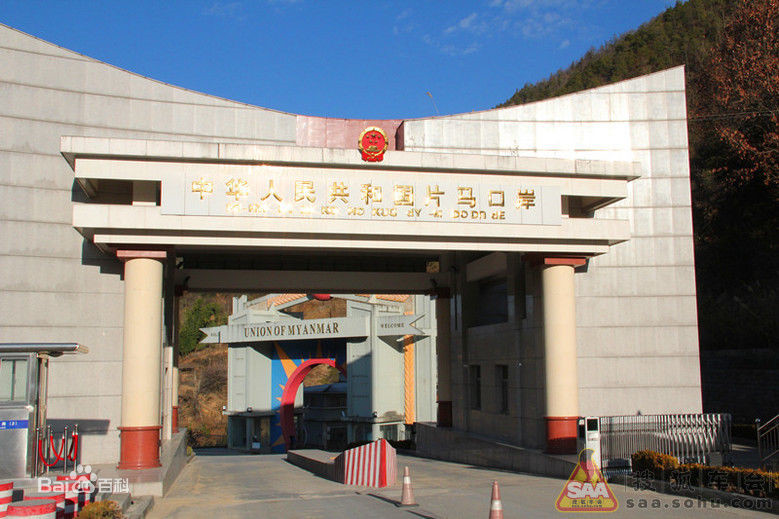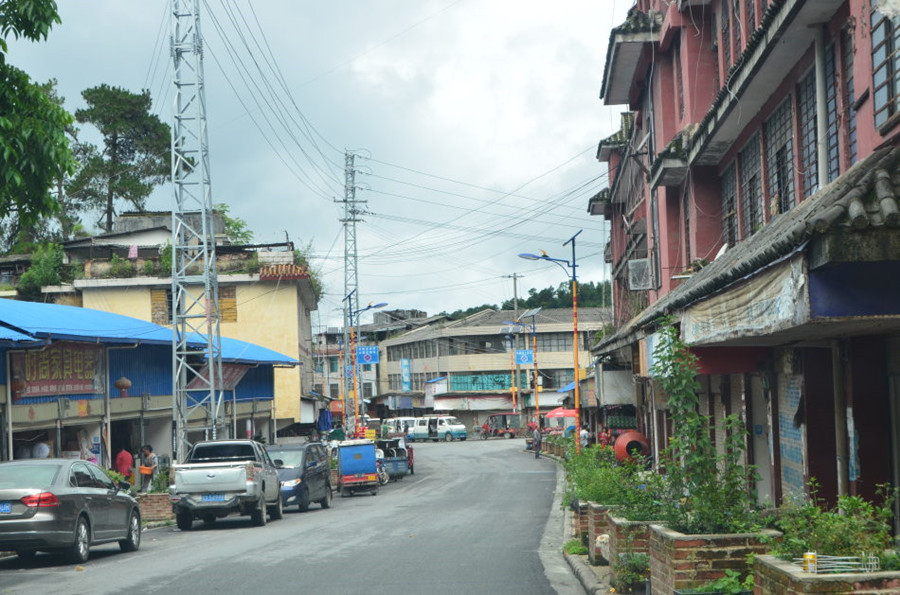
Pianma Border Port in Lushui County, Nujiang

Attraction Overview
Pianma is the only one provincial-level port in Nujiang Prefecture, Northwest Yunnan. It’s situated in the west part of Gaoligong Mt. Natural Reserve.
Attraction Type: Border Port
Chinese Name: 片马口岸(Pinyin: Pianma Kouan)
Best Time to Visit: All-year-round
Open Hours: All Day
Admission Fee: Free
Highest Altitude: 1897 meters
Location: Pianma Town of Lushui County in Nujiang, Yunnan
The Piemar Border Port (片马口岸) is located in the western slope of the Gaoligong Mountain National Nature Reserve (高黎贡山国家级自然保护区) in Lushui County (泸水县), Nujiang Lisu Autonomous Prefecture (怒江傈僳族自治州), Yunnan Province (云南省). It borders Myanmar (缅甸) to the south, west, and north, and is the only provincial-level open border port in Nujiang Prefecture. The port has become an important gateway for Yunnan Province‘s opening to the outside world, with significant potential in resource development, processing, and trade.
Location and Climate
Geographical Area: The port covers a total area of 153 square kilometers.
Altitude: Situated at an altitude of 1,897 meters.
Climate: The region has a temperate rainforest climate, typical for this area of the western slopes of the Gaoligong Mountains.
Distance: Located 736 kilometers from the provincial capital Kunming (昆明), the port serves as a shortcut for access to Myanmar, India, and other Southeast Asian countries, significantly shortening the travel distance by 1,800 nautical miles compared to routes through Kunming, Zhanjiang, or Guangzhou.
Strategic Importance
Piemar serves as a crucial economic gateway for Nujiang Prefecture and plays a pivotal role in Yunnan Province‘s broader strategy of international trade and cross-border cooperation. It facilitates trade between China and Myanmar, with Piemar Town (片马镇) being the focal point for this dynamic border interaction.
Access to Southeast Asia: From Piemar, the journey to Myitkyina (密支那) in Myanmar is approximately 220 kilometers, with further access to Southeast Asian countries and Europe, making it an important trade route for the region.
Key Economic Development: The port is rapidly developing into a multi-functional, comprehensive border port, focusing on resource development, trade, and processing.
Economic Development
Core Functions: The port is becoming a key hub for resource extraction, product processing, and import/export trade. As one of the most vital economic assets in Nujiang Prefecture, it plays an essential role in regional economic growth.
Cross-Border Trade: The port’s development supports the growth of trade between China and Myanmar, and further with Southeast Asia, positioning Piemar as a crucial international trade gateway.
I. Strategic Location & Geography
🛰️ Border Significance
Located on the western slopes of Gaoligongshan National Nature Reserve in Pianma Town, Lushui City, Nujiang Lisu Autonomous Prefecture, Pianma is Yunnan’s only provincial-level land port to Myanmar, sharing 64.44 km of international border on its south, west, and north with the neighboring country.
Since ancient times, it has served as a vital gateway from northwest Yunnan into Myanmar, historically described as “the throat to Myanmar and Tibet.” As early as the Tang Dynasty, civilian trade routes passed through this area.
🏔️ Natural Terrain & Access
Elevation: Ranges from 1,800 to 3,200 meters
Travelers must traverse the Gaoligongshan Fengxue Pass (3,200m)
Approximate 2.5-hour drive from Liuku town; 4×4 vehicles recommended for certain segments
II. Historical Layers: From Trade Hub to Battlefield
🐎 Ancient Border Trade
Salt-Horse Route (Yunlong–Liuku–Pianma–Myanmar)
Emerging in the late Ming to early Qing dynasties, this caravan trail carried salt from inland China to northern Myanmar. The route was once referred to as “Shangyangjiao”, marking its prominence in cross-border trade.
Administrative History:
Tang Dynasty: Under the Nanzhao Kingdom
Ming Dynasty: Designated as Chashan Chiefdom
Late Qing: Temporarily occupied by British and Japanese forces
1961: Officially returned to Chinese sovereignty
✈️ Wartime Legacy
Hump Air Route Relics
During WWII, Pianma became a pivotal stop on the infamous “Hump Route,” known as the “Sky Death Line.”
Visit the C-53 Crash Site Memorial Hall, dedicated to the nearly 2,000 Allied pilots who perished flying over the Himalayas.
III. Modern Border Port Functions
🔁 Cross-Border Trade
Imports: Burmese timber, hollow bamboo
Exports: Chemical products, mining equipment, daily necessities
In 2023, the Mutual Trade Service Center was launched, streamlining customs procedures.
-
Peak single-day trade volume exceeded 100 million RMB
-
Total import/export volume reached 616 million RMB as of Sept 2023
🛂 Public Services
Legal aid stations offer guidance on immigration laws
Local officers assist villagers with farming tasks (e.g., plum harvesting) and job placement — strengthening community-police ties
IV. Cultural Tourism & Heritage
📍 Must-Visit Sites
Hump Route Memorial Hall: Exhibits the remains of a C-53 aircraft and detailed war archives
Anti-British Battle Site: Commemorates local resistance during colonial incursions
🌏 Cross-Border Ethnic Culture
Pianma Town:
-
Permanent residents: ~1,740
-
Floating population: Over 20,000
Cultural mix of Lisu, Jingpo (Tea Mountain branch), and Burmese influences creates a uniquely transnational community
V. Traveler Essentials
| Category | Details |
|---|---|
| Port Hours | 08:00–18:00 (Subject to policy updates) |
| Getting There | Take a shuttle from Liuku to Pianma Town, then transfer to a tricycle taxi to reach the border. Snow chains required for winter driving |
| Safety Notes | Watch for landslides in rainy season; drones prohibited in border zones; respect local Burmese customs |
⚠️ Policy & Outlook
Since the full reopening in 2023, cross-border trade has surged. Future plans include resource processing zones and integrated cross-border tourism initiatives.
💡 A place where caravan bells once echoed through salt trails, now humming with diesel engines and customs flows—Pianma remains a vital artery connecting Yunnan to Myanmar, past to present.

 7 Days GolfingTour
7 Days GolfingTour
 8 Days Group Tour
8 Days Group Tour
 8 Days Yunnan Tour
8 Days Yunnan Tour
 7 Days Shangri La Hiking
7 Days Shangri La Hiking
 11 Days Yunnan Tour
11 Days Yunnan Tour
 6 Days Yuanyang Terraces
6 Days Yuanyang Terraces
 11 Days Yunnan Tour
11 Days Yunnan Tour
 8 Days South Yunnan
8 Days South Yunnan
 7 Days Tea Tour
7 Days Tea Tour
 8 Days Muslim Tour
8 Days Muslim Tour
 12 Days Self-Driving
12 Days Self-Driving
 4 Days Haba Climbing
4 Days Haba Climbing
 Tiger Leaping Gorge
Tiger Leaping Gorge
 Stone Forest
Stone Forest
 Yunnan-Tibet
Yunnan-Tibet
 Hani Rice Terraces
Hani Rice Terraces
 Kunming
Kunming
 Lijiang
Lijiang
 Shangri-la
Shangri-la
 Dali
Dali
 XishuangBanna
XishuangBanna
 Honghe
Honghe
 Kunming
Kunming
 Lijiang
Lijiang
 Shangri-la
Shangri-la
 Yuanyang Rice Terraces
Yuanyang Rice Terraces
 Nujiang
Nujiang
 XishuangBanna
XishuangBanna
 Spring City Golf
Spring City Golf
 Snow Mountain Golf
Snow Mountain Golf
 Stone Mountain Golf
Stone Mountain Golf














